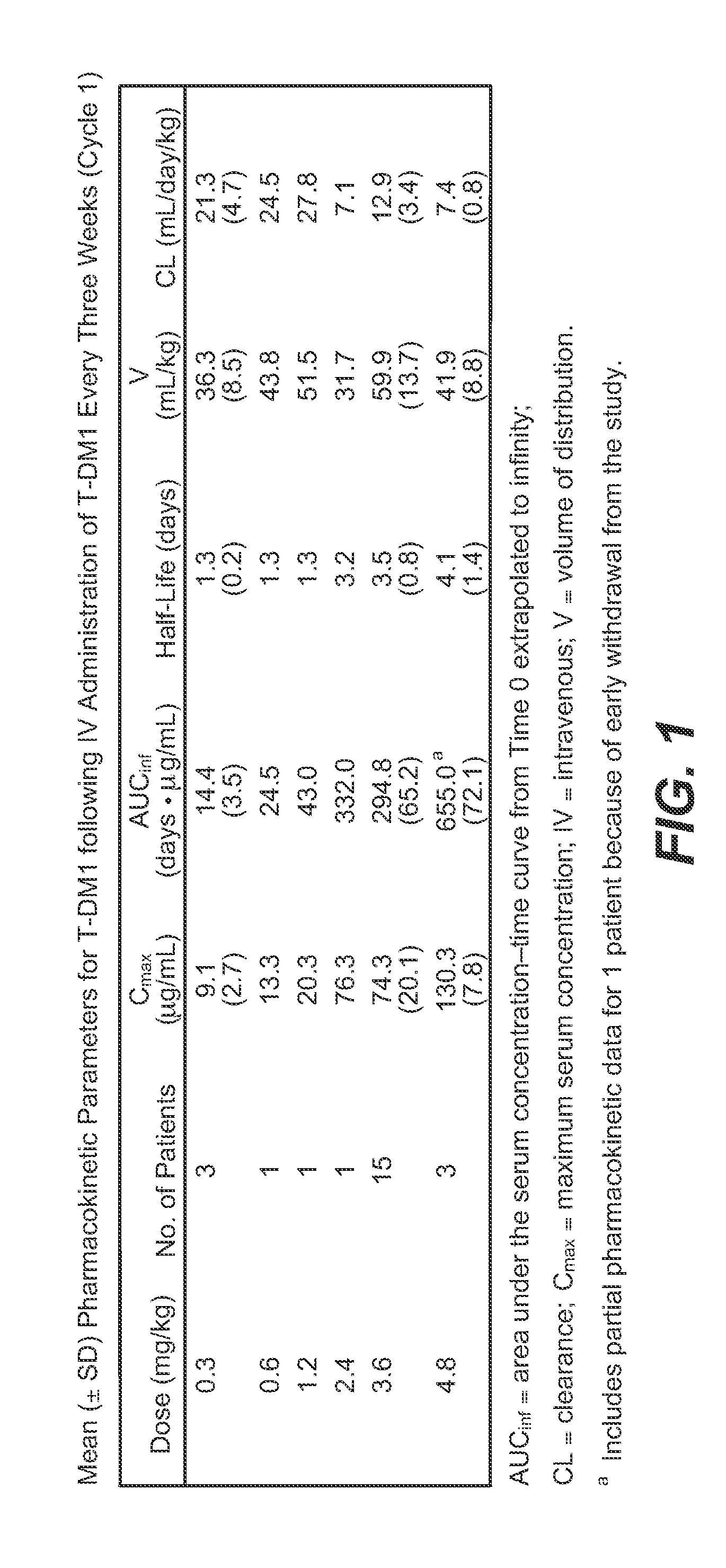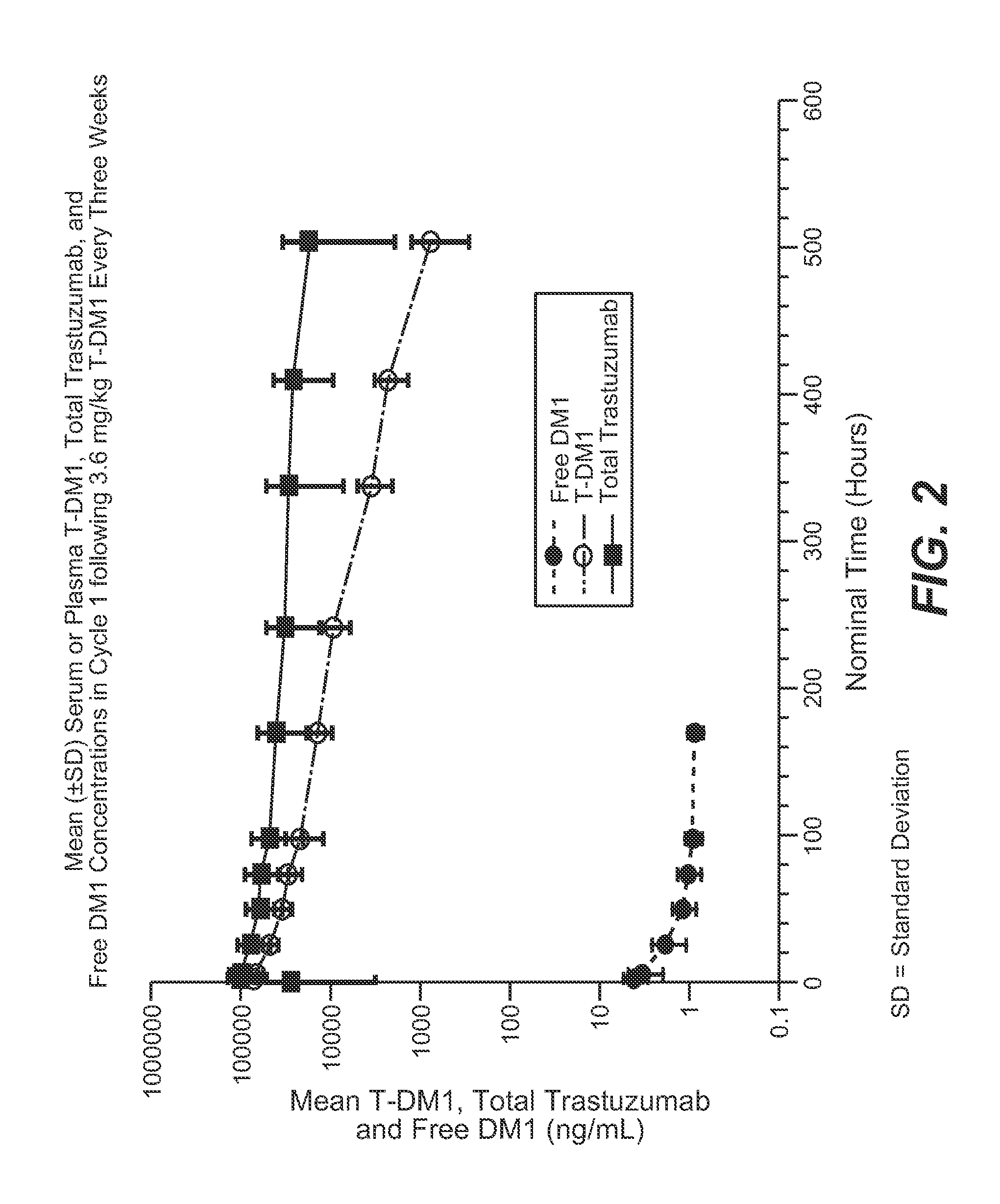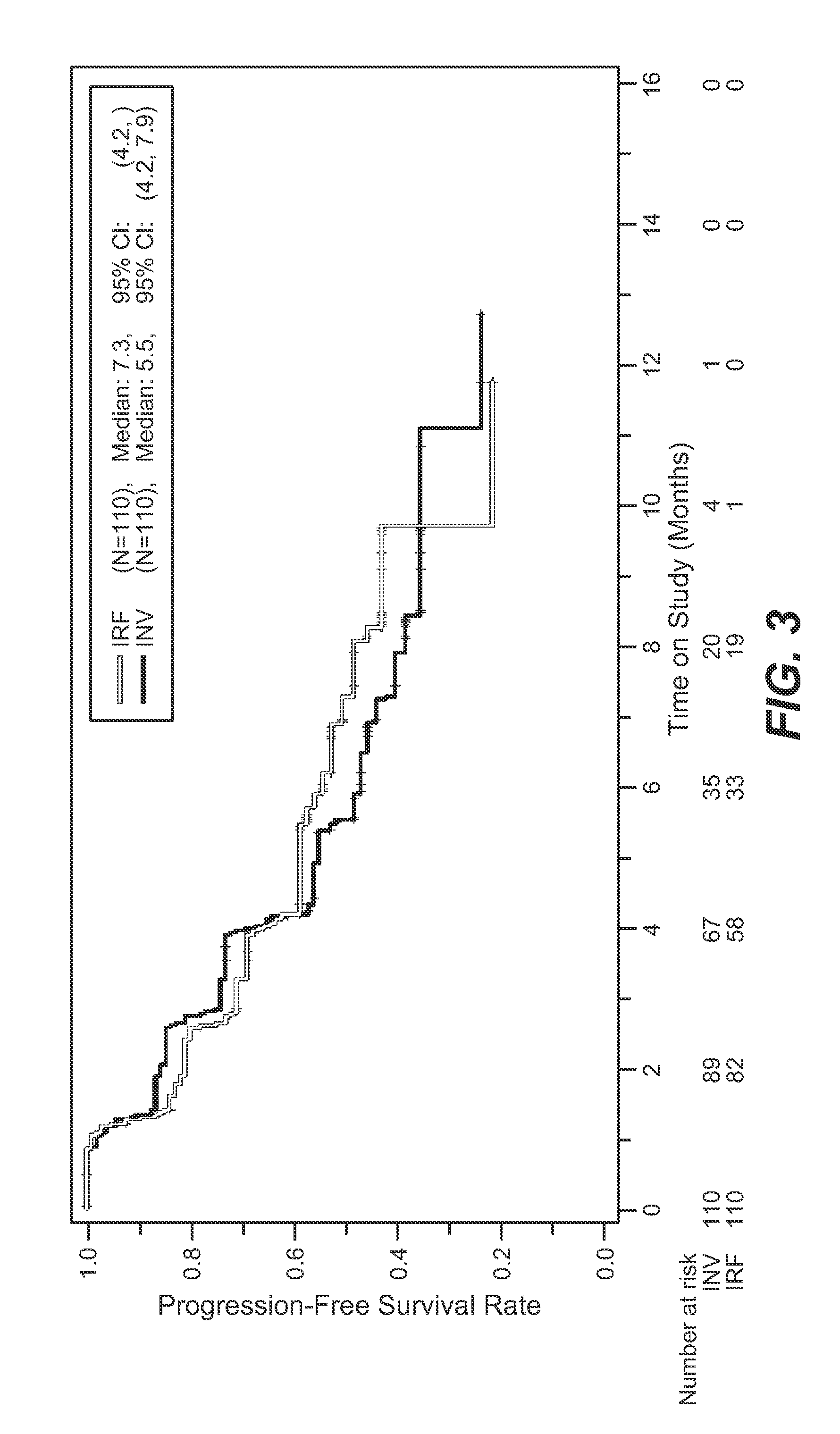Methods of treating metastatic breast cancer with trastuzumab-mcc-dm1
a breast cancer and trastuzumab technology, applied in the direction of antibody medical ingredients, drug compositions, peptides, etc., can solve the problem of abandoning the further development of the drug
- Summary
- Abstract
- Description
- Claims
- Application Information
AI Technical Summary
Benefits of technology
Problems solved by technology
Method used
Image
Examples
example 1
Preparation of Trastuzumab-MCC-DM1
[0113]Trastuzumab was purified from HERCEPTIN® by buffer-exchange at 20 mg / mL in 50 mM potassium phosphate / 50 mM sodium chloride / 2 mM EDTA, pH 6.5 and treated with 7.5 to 10 molar equivalents of succinimidyl 4-(N-maleimidomethyl) cyclohexane-1-carboxylate (SMCC, Pierce Biotechnology, Inc), 20 mM in DMSO or DMA (dimethylacetamide), 6.7 mg / mL (US 2005 / 0169933; US 2005 / 0276812). After stirring for 2 to 4 hours under argon at ambient temperature, the reaction mixture was filtered through a Sephadex G25 column equilibrated with 50 mM potassium phosphate / 50 mM sodium chloride / 2 mM EDTA, pH 6.5. Alternatively, the reaction mixture was gel filtered with 30 mM citrate and 150 mM sodium chloride at pH 6. Antibody containing fractions were pooled and assayed. Recovery of trastuzumab-SMCC was 88%.
[0114]The drug-linker intermediate, trastuzumab-MCC from above, was diluted with 50 mM potassium phosphate / 50 mM sodium chloride / 2 mM EDTA, pH 6.5, to a final concentr...
example 2
T-DM1 Formulation
[0118]T-DM1 was provided as a single-use lyophilized formulation in a 20-cc Type I USP (Ph Eur) glass vial fitted with a 20-mm fluoro resin-laminated stopper and aluminum seal with a dark grey flip-off plastic cap. The formulated drug product, after reconstitution with 8.0 mL sterile water for injection (SWFI), contains 20 mg / mL T-DM1, 10 mM sodium succinate, pH 5.0, 6% (w / v) trehalose dihydrate, and 0.02% (w / v) polysorbate 20. Alternatively, 6% (w / v) sucrose may be used instead of 6% (w / v) trehalose dehydrate. Each 20-cc vial contains approximately 172 mg to deliver a vial content of 160 mg of T-DM1. The reconstituted product contains no preservative and is intended for single use only.
[0119]Study Drug Preparation of Lyophilized formulation: With a new syringe, add 8.0 mL of SWFI to the vial and swirl gently until completely dissolved. Remove the indicated volume of trastuzumab-MCC-DM1 solution from the vial(s) and add to the IV bag. Gently invert the bag to mix th...
example 3
Dosage, Administration, and Storage of Trastuzumab-MCC-DM1
[0121]Trastuzumab-MCC-DM1 (T-DM1) was given at a dose of 3.6 mg / kg per patient weight intravenously (IV) every 3 weeks. The total dose will depend on the patient's weight on Day 1 of each cycle. T-DM1 was administered in 21-day cycles. A dose delay of up to 21 days is allowed if needed for resolution of toxicities or other adverse events. If the timing of a protocol-mandated procedure (such as the infusion of T-DM1) coincides with a holiday that precludes the procedure, the procedure is performed on the nearest following date, with subsequent protocol-specified procedures rescheduled accordingly.
[0122]Dose Calculation: Trastuzumab-MCC-DM1 is given on the basis of a patient's weight on the day of each infusion.
[0123]The initial dose is administered over 90 (±10) minutes. Infusions may be slowed or interrupted for patients experiencing infusion-associated symptoms. Following the initial dose, patients will be observed for at le...
PUM
| Property | Measurement | Unit |
|---|---|---|
| pH | aaaaa | aaaaa |
| pH | aaaaa | aaaaa |
| weight:weight | aaaaa | aaaaa |
Abstract
Description
Claims
Application Information
 Login to View More
Login to View More - R&D
- Intellectual Property
- Life Sciences
- Materials
- Tech Scout
- Unparalleled Data Quality
- Higher Quality Content
- 60% Fewer Hallucinations
Browse by: Latest US Patents, China's latest patents, Technical Efficacy Thesaurus, Application Domain, Technology Topic, Popular Technical Reports.
© 2025 PatSnap. All rights reserved.Legal|Privacy policy|Modern Slavery Act Transparency Statement|Sitemap|About US| Contact US: help@patsnap.com



